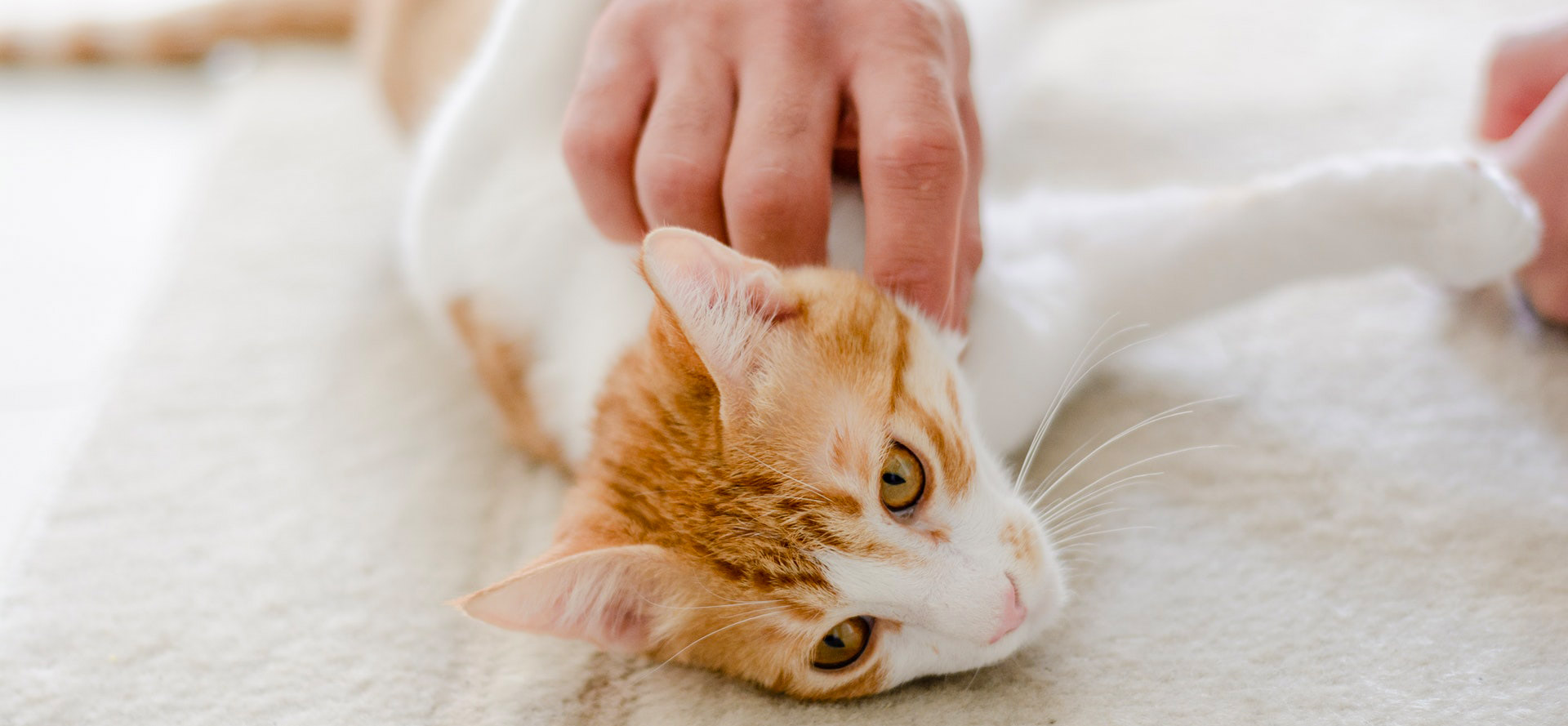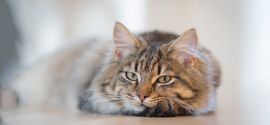Cat Behavior

Living with cats can be exciting and fun. Like humans, cats experience a whole spectrum of emotions ranging from amusement, pleasure, fear, frustration, hunger, anxiety, and others that may affect their behavior. They also have mood variations; they can be in the mood to be playful, and sometimes, they want to be alone. There are several behaviors cats exhibit and different ways they communicate with humans. When you notice changes in your cat's behavior, it could be in response to an underlying problem that needs to be addressed.
In this article, you will learn about various cat behaviors considered normal, behavioral changes, and how to deal with behavioral problems.
Facts About Cats Behavior
Every cat has a distinct personality and different reactions to different situations. Sometimes, there is no particular reason behind a peculiar behavior exhibited by a cat, good or bad. Cats perform common behavioral actions like purring, grooming, climbing, scratching, and kneading for different reasons. Some tend to be more sociable, while others may be shy. In most cases, cats' behaviors are generally a result of their instincts and personalities. When cats experience pain and fear, they sometimes have a behavior change that results in aggression.
Changes by Age
Changes in the behavior of cats occur as they grow older, just like people. This variation is a normal aspect of advancing years. As the cat grows older, its behavior changes continually throughout life. As cats pass through each stage of life, the signs of aging increase, and their energy reserves deplete faster. Kittens are usually very energetic and more destructive, but older cats are calmer and less destructive. Kittens also learn to imitate their humans' activity patterns, including their sleep-wake cycle, which continues through their adult years.
As cats mature from adulthood into senior status and further, they exhibit some behavioral indicators of aging. They become more aggressive, more vocal, easily confused, withdrawn, irritable, and demanding. Cats also tend to have an unusual sleep-wake cycle as they grow older. They might start staying up all night and sleeping in all day.
Senior cats may be more prone to aggression because their eyesight and hearing deteriorate with age. This means their senses are not as sharp and don't perceive as much as they used to do. They are easily caught off guard and react accordingly, making it seem like they are becoming meaner with age. They might also suffer from Feline Cognitive Dysfunction. This condition makes affected cats experience various symptoms, including decreased cognitive abilities, memory loss, and sight and hearing problems.
Cats become seniors around age 11. Officially, they become geriatric around age 15, which is the equivalent of 80 in human years. Cat owners need to study and watch for changes in their senior cats and discuss them with their vet.
Cat Behavioral Changes
Several cat behaviors are seen as undesirable. To recognize unnatural traits, behavioral changes, or problems in cats, it is important to know which cat behaviors are normal. These unwanted behaviors affect the quality of life for the owners and the pets. Thankfully, most of them can be corrected. There is no single reason behind a particular behavior, and all cats have very distinct personalities. Also, some of these behaviors are due to irritants from the environment. The cat owner needs to recognize the causes and triggers to avoid unnecessary stress in cats.
Some other behavioral changes that can be identified in cats include:
- Eating behavior changes: Not eating or drinking enough is a behavior change noticed in cats. Also, there is a behavior known as pica, which is a situation where the cat excessively eats and chews non-edible items. This should be taken very seriously because removing these indigestible materials requires surgery in some cases.
- Aggressive behavior changes: Some cats naturally have stronger predatory instincts, which make them act aggressively towards toys, children, other pets, or even the cat owners. This is normal for a prey-driven cat. However, if a calm and non-aggressive cat suddenly begins to act out, this is a reason to get concerned. The most common reasons for a cat to start exhibiting such behavioral changes that lead to aggression are pain and fear. A cat can be fearful of negative veterinary visits, new animals in the household or environment, new smells on its belongings, negative encounters with people, and a lot more. Recent surgeries, trauma-inducing accidents, and other diseases or illnesses can also cause pain in a cat. To resolve these aggressive behaviors, try to find and eliminate the cause of pain or fear in your cat. Using medications, behavior supplements, and regular reassurance are solutions that can work.
- Playtime behavior changes: Just like humans, cats also have individual and unique personalities. Some of them are naturally more playful and energetic than others. When an active cat suddenly becomes calm, sleeps more, and doesn't play like it used to, this behavioral change should cause concern. Try to find out if the cat is in pain or does not feel well when this happens. A veterinary visit may be in order if your cat does not go back to being a normal lively cat after a couple of days.
- Vocalization behavior changes: In cats, meowing is a normal and healthy way to communicate with their owners. If your cat is making noises like crying and yowling or vocalizations like hissing and growling, they might indicate fear, pain, confusion, or distress. This could be their reaction to an irritant stimulus. In addition to that, more vocalizations at night could be due to cognitive dysfunction. When you notice these changes in vocalizations, assess the situation and think about the possible causes. If you cannot think of any reason, schedule a visit with your veterinarian to check if there is a medical reason causing distress in your cat.
- Grooming behavior changes: Like nail-biting indicates nervousness in humans, it could also be a sign of boredom or anxiety in cats. This is called displacement behavior. It is so-named because your cat is suppressing a particular impulse and channeling it into nail-biting. When this becomes persistent and uncontrollable, you should look for the causes of anxiety in your cat. Also, cats naturally groom themselves when they are relaxed. When your cat stops grooming itself or you notice a major decline in the rate at which it does, it might be overweight, have sore joints, or be ill. The cat should be taken to a veterinarian for a checkup.
Cat Behavioral Problems: How to stop it?
Here are some general tips to help control and reduce these behavioral problems in your cat:
- Facilitate a low-stress environment for your cat.
- Cat-proof your home by avoiding toxic plants and materials in your home.
- Always keep your cat's litter box clean.
- Check for some stressors like fights between your pets or stray animals visiting your home.
- Consider ways to further socialize with your cat and make it more comfortable.
- Never hit an aggressive cat. It leads to more aggression.
- Seek the help of a vet or a qualified behavioral therapist.
Conclusion
We hope the tips listed above help you notice and curb sudden behavioral changes in your feline friends. If you have tried these tips and it doesn’t help, you should talk to a professional.
FAQs
Does neutering a cat change their behavior?
The behaviors affected by neutering in cats are mainly those influenced by male hormones. A cat's behavior is determined by genetics, upbringing, environment, among other factors. Hence, the presence or absence of male hormones does not affect a cat's personality.
Does spaying a cat change the cat's behavior?
Some cats might show more aggression immediately after the operation due to the pain and feelings of vulnerability. Hence, these changes are due to the surgery itself, and the cat will rebound a few days after the surgery. Ensure you provide a quiet and warm place for the cat to recover. Apart from this, research shows that the cat's personality remains unchanged after spaying.
How to stop bad behavior in cats?
You can stop bad behavior in cats by choosing a motivator to entice your cat to act properly. This can be in the form of a reward with a special item only when your cat behaves how you want it to. Bad behaviors can also be discouraged by using deterrents, startling them with loud noises, and giving the cat a timeout for about 15 minutes by putting it in a room alone.
What is cat behavior meaning?
These are the facial expressions, vocalizations, tail, and body postures that a cat uses to express its emotional state and intentions. A cat’s behavior mainly depends on its individuality, age, breed, upbringing, and past experiences.
Tags: best pet supplies, bark collar for small dogs, best food for kittens, wireless fences for dogs, puppy food reviews, cat litter, best automatic cat litter box, is pepperoni safe for cats, best cat treats, cat enclosures for outdoors




